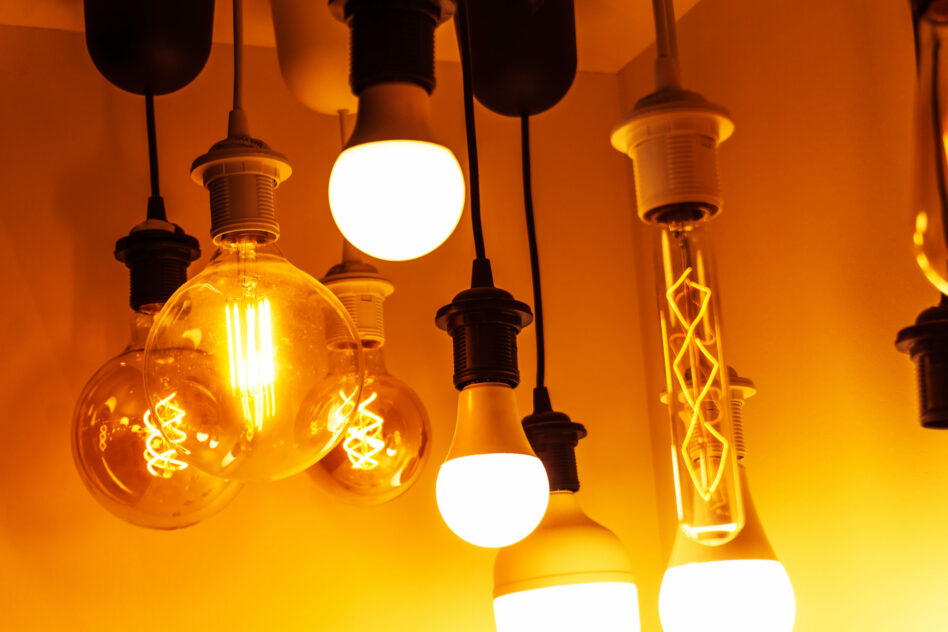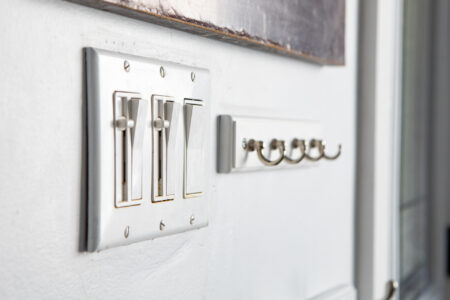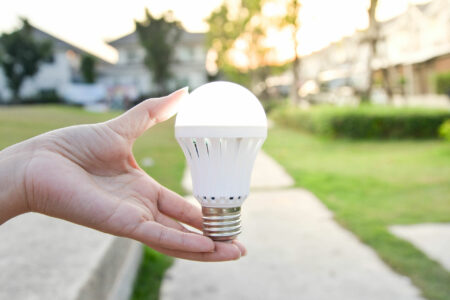Do your LED lights emit two slightly different colors so the lighting appears mismatched? Well, you’re not alone. Many homeowners have encountered this issue. In this article, we’ll explore why LED lights discolor and tackle ways to troubleshoot this.
Why Have LED Lights Different Colors?
LED lights may appear as two different colors due to several factors, including the type of LED used or the color temperature setting. The LED bulb’s lifespan and environmental factors like temperature and humidity can contribute to this phenomenon too.
But don’t worry. There are ways to fix this! You can swap the affected bulbs with higher quality or better-matching LED bulbs. You can also adjust the color temperature settings and see if it works.
Understanding LED Lighting
Before we dig into the main topic, let’s first wrap our heads around LED lighting. This will give you a solid understanding of what LED is and how it the technology could affect the color issue.
What Is an LED?
An LED (light-emitting diode) is a type of semiconductor that produces light when an electrical current passes through it. LEDs are made up of two layers of semiconductor material: a p-type layer and an n-type layer.
When the two layers are combined, they create a junction where electrons flow across, releasing energy in the form of light. LEDs come in various shapes and sizes, from tiny indicator lights to sizeable outdoor lighting fixtures.
How Does an LED Produce Light?
Unlike traditional bulbs that produce light by heating a filament, LEDs produce light through a process called electroluminescence.
When an electric current passes through the LED’s semiconductor material, the electrons within the material move to a higher energy level. As these electrons return to their original energy state, they release energy in the form of light.
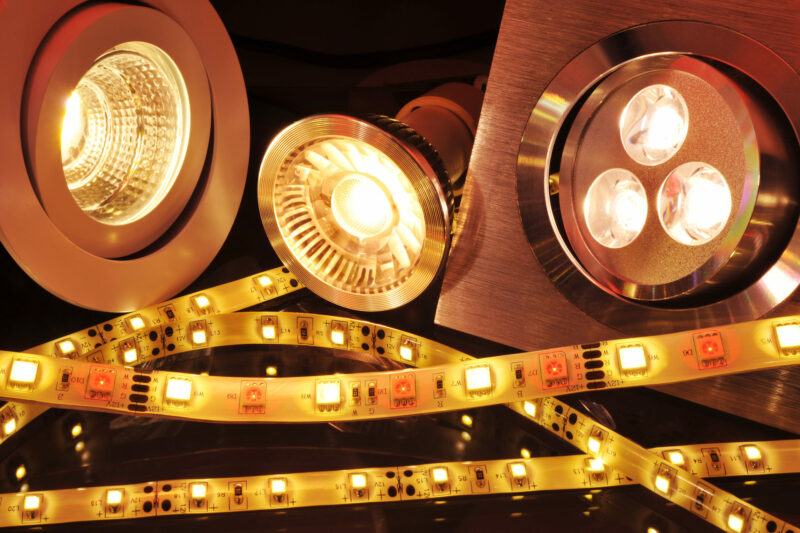
How Does an LED Produce Colors?
The color of the light emitted is determined by the energy gap between the electrons’ energy levels, which is unique to each semiconductor material. In addition, some LED lights use phosphors. These phosphors absorb some of the blue light and emit light of a different color.
This creates a broader range of colors to be produced by the LED. Furthermore, the combination of different semiconductor materials and phosphors can result in various colors and color temperatures in LED lighting.
Why Do Some Led Lights Have Differing Colors?
LED lights are a popular and energy-efficient option for homes, businesses, and public spaces. However, some LED lights can appear to have different colors, which frustrates many customers and homeowners.
In this section, we’ll explore five factors that can cause LED lights to have differing colors.
Color Rendering Index (CRI)
The Color Rendering Index (CRI) measures how accurately a light source can reproduce colors. LED bulbs with a higher CRI will produce colors more accurately than those with a lower CRI. If LED lights with different CRI values are installed together, they will appear in different colors.
Dimmer Compatibility
LED bulbs are often used with dimmer switches to adjust the light output. However, not all LED bulbs are compatible with all dimmer switches. If LED lights of different brands or types are installed together, they may not be compatible with the same dimmer switch. This can cause the lights to flicker or produce different colors.
Diode Quality
The quality of the diode used in an LED bulb can impact the color and consistency of the light produced. Cheaper bulbs may use lower-quality diodes, which can produce less consistent colors. On the other hand, higher-quality bulbs tend to have more consistent colors and a longer lifespan.
Voltage
LED bulbs are designed to operate within a specific voltage range. If the voltage supplied to an LED bulb is too high or too low, it can impact the color and brightness of the light produced.
Furthermore, overdriving an LED bulb with a higher voltage than it’s designed for can cause it to produce a brighter, bluer light. Conversely, undervolting an LED bulb can cause it to produce a dimmer, yellower light.
If LED lights of different voltages are installed together, they may appear as different colors due to variations in brightness and color.
Damaged LED
LED lights may appear in two different colors if the bulbs are damaged. This can happen if the phosphor coating on the bulb’s surface is damaged. As a result, the light can shift towards the blue end, resulting in a colder color temperature.
Additionally, damaged LED chips can cause uneven illumination and color. This means that if LED lights with damaged bulbs are installed together with non-damaged bulbs, they may appear as different colors due to variations in brightness and color.
Thus, it’s important to ensure that all bulbs are free from physical damage and exposure to moisture.
How to Fix Color Differences in LED Lighting?
Fixing LED lighting is a process that requires careful consideration of several factors.
Check the Color Temperature
The color temperature of LED bulbs is measured in Kelvin (K). A lower Kelvin rating means the light will have a warmer, yellowish tone, while a higher rating produces a cooler, bluer light.
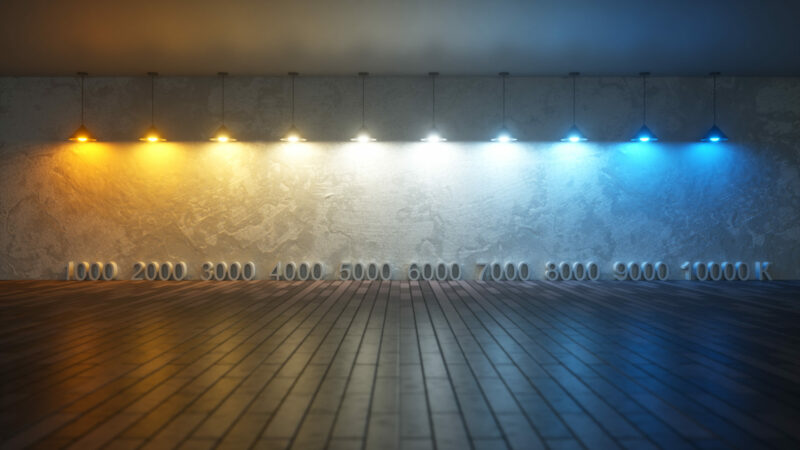
If your LED lights have a different color temperature than you prefer, consider replacing the bulbs with ones that have a rating that better matches your desired lighting environment.
Replace Low-Quality Bulbs
The quality of LED bulbs can vary greatly, and low-quality bulbs may produce inconsistent colors.
Consider replacing any low-quality bulbs with high-quality ones to ensure consistent and accurate colors.
Adjust the Environment
The environment in which LED lighting is used can also affect the colors produced. For example, if the walls in a room are painted a warm color, it may affect the perceived color of the LED lighting.
Consider adjusting the environment to better match the lighting, such as painting walls a neutral color or using color filters on the lights.
Use Color Calibration Tools
Color calibration tools can ensure consistent and accurate colors in LED lighting. These tools can measure the color temperature of the lights and adjust them to match the desired lighting environment.
Consider Professional Help
If you still have trouble fixing color differences in your LED lighting, consider seeking professional help. A lighting specialist can help diagnose the issue and recommend solutions tailored to your lighting environment.
Bright Ideas: Best Practices for LED Lighting
Lastly, we’ve provided five tips for using LED lights. These practices will enable you to maximize the benefits of this innovative lighting solution. Whether you’re a homeowner, business owner, or simply exploring, you can definitely make the most of this investment.
- Choose the correct bulb: Consider the color temperature, lumens, and wattage when choosing an LED bulb.
- Use LED dimmers: Use dimmer switches specifically designed for LED lights to prevent flickering and ensure a smooth dimming experience.
- Keep them clean: Regularly clean your LED lights with a soft cloth to ensure maximum performance.
- Use compatible fixtures: Make sure your LED bulbs are compatible with your fixtures to avoid potential issues and ensure optimal performance.
- Consider lighting controls: Lighting controls, such as timers or motion sensors, can help reduce energy consumption by turning off lights when not in use.
